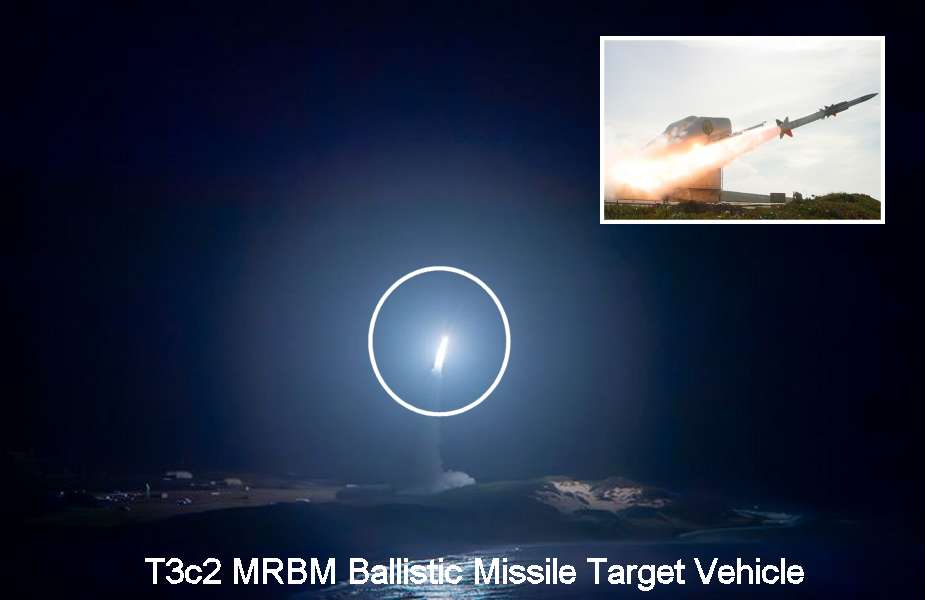Northrop Grumman successfully launches T3c2 MRBM Ballistic Missile Target Vehicle
On March 29, 2024, Northrop Grumman Corporation revealed that it had successfully launched its MRBM T3c2 ballistic missile target vehicle. This initiative was undertaken in support of the Missile Defense Agency's Flight Test Aegis Weapon System 32 (FTM-32), also known as Stellar Laelaps, in close collaboration with the US Navy at the Kauai, Hawaii site.
Follow Army Recognition on Google News at this link

Northrop Grumman T3c2 MRBM Ballistic Missile Target Vehicle (Picture source: Northrop Grumman)
The target vehicle, designated as a Type 3 Configuration 2 Medium-Range Ballistic Missile (T3c2 MRBM), represents a sophisticated example of missile engineering and design. It was successfully launched from the Pacific Missile Range Facility, demonstrating the exceptional capabilities of the ship's Aegis defense system to detect, track, and intercept an advanced MRBM during the terminal phase of its flight, thanks to the use of the Standard Missile-6 (SM-6) Dual II missile.
This two-stage target vehicle, powered by solid propellant engines, incorporates cutting-edge technologies to accurately simulate ballistic threats. The first stage uses a decommissioned Navy engine, providing the thrust needed to overcome Earth's gravity and propel the missile through the lower atmosphere. The second stage, powered by a decommissioned Air Force engine, takes over at a higher altitude, allowing the target vehicle to reach its desired suborbital trajectory. This innovative use of existing components illustrates Northrop Grumman's ability to adopt sustainable solutions while maintaining the precision and reliability required for missile defense testing.
Robin Heard, director of targets at Northrop Grumman, noted that this program builds on the company's proven history of designing innovative rockets, executed with speed and discipline. By developing and producing three T3c2 target vehicles, Northrop Grumman provided realistic and complex test scenarios necessary to prove and verify the capabilities of the Aegis SM-6 weapon system.
As a reminder, ballistic missiles are long-range weapons that follow a ballistic trajectory to reach their target. Their launch is broken down into three main phases: the propulsion or launch phase, where the missile is propelled by its rocket engines; the free or ballistic flight phase, where it rises then descends towards its target following a trajectory dictated by gravity; and finally, the re-entry phase, where the missile, or its payload, returns to the Earth's atmosphere towards its target. Ballistic missiles are categorized by their range, from short-range ballistic missiles (SRBMs) to intercontinental ballistic missiles (ICBMs), the latter of which can travel thousands of kilometers. Due to their high speed and predictable trajectory, defending against these missiles represents a significant technological challenge.
The Standard Missile-6 (SM-6), meanwhile, plays a crucial role in defending against these threats with its ability to engage targets beyond the radar horizon and intercept enemy missiles in the terminal phase of flight. Integrated into the Aegis weapon system, the SM-6 significantly improves the air and missile defense capabilities of naval platforms. The Aegis system, a combination of advanced radars and combat management systems, enables tracking and engagement of multiple targets simultaneously, providing a critical layer of protection against ballistic missiles and other aerial threats. The use of the SM-6 in this system represents a major evolution in missile defense, allowing ships equipped with the Aegis system to effectively detect, track, and neutralize ballistic missiles before they reach their target, thus strengthening the security of territories and allied forces.
- Hits: 2320
















